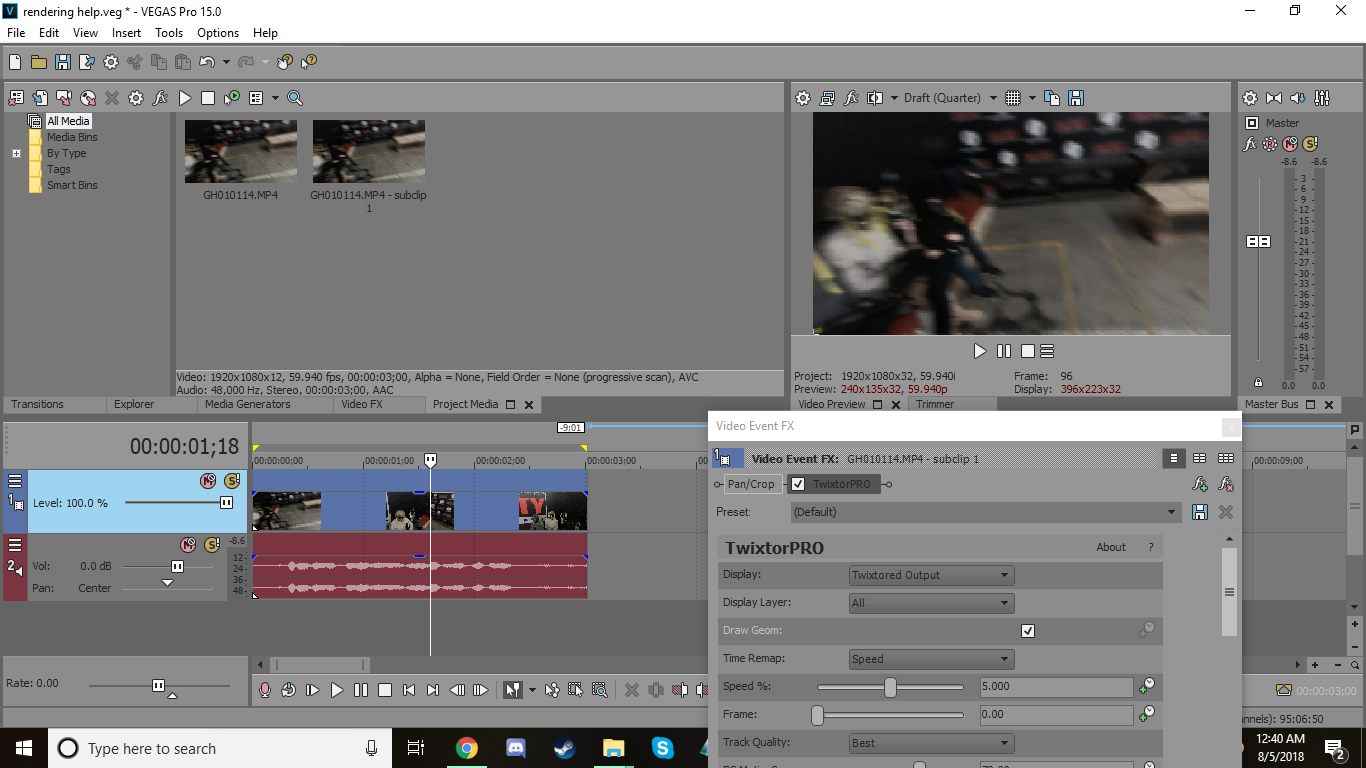
I would be happy, if you have the original, unaltered DV clip of the exact same sequence (corner kick, bicycle kick, goal) to take a shot at denoising it.īTW, just for grins, I slowed down the kick to 5% so I could A/B with the Twixtor footage. As you know, that is another thing I have spent a lot of time trying to perfect (see the fish denoising thread with Nick Hope a few months back). You can edit your clip as you would any other media asset, including adding effects, adjustment layers, and keyframe animations.Speaking of noise reduction, the AVI file you uploaded sure looked to me as though noise reduction had already been applied.

If you’re fortunate enough to have a Drone for your project, there are some things to consider when filming to help create that cinematic look. Part 3: Drone Footage Cinematic Effect Using Slow Motion in After Effects

Make sure your timeline is long enough to include the additional clip length. Add the clip you’re working with to the timeline and trim to the length you want.Once you’ve installed the plugin, follow these simple steps to create a slow-motion effect. Twixtor by RevisionFX is a plugin for After Effects, which can help you create super slow motion footage, even if you’ve not shot at a higher frame rate. Click on the Layers panel on the Frame Blend option to choose either Standard Frame Blending or Pixel Motion Frame Blending.Ī plugin that can take the place of the built-in Timewarp effect is Twixtor, which is well worth checking out.This method is super helpful if you need to fit footage into a template. For example, change the number 04.00 to adjust the duration to 4 seconds. Change the Duration setting if you know how long you need the video to be but are not worried about how much the speed has changed.Normal speed would be 100, and to slow your clip to half speed, you would change this setting to 200. Change the Stretch Factor setting to adjust your clip in percentage terms.In the dialogue box, you can stretch your clip using 2 different methods the Stretch Factor and New Duration.Right-click on the clip in the timeline and select Time > Time Stretch.Trimming the clip tells After Effects which portion of it you want to use.

The Time Stretch function allows you to stretch the clip in your timeline, increasing its length. You can still slow the footage down if it’s at 24 or 30 fps, and we’re going to show you how. If you shoot in 50 fps, you can slow the footage down to half speed and stay above 24 fps. We view regular speed footage at 24 fps, and anything below that looks a little jerky. The frame rate tells you how many images per second are being recorded. Once you’re happy with the clip you want to slow down, choose either the Timewarp or Time Stretch methods below.įor the best slow-motion shots, you should film the footage at a higher than the standard frame rate. You should also make sure your composition is long enough for your clip once the speed effects have been added. The first step is to trim your footage to the correct length before you apply your speed effects. In this tutorial, we will look at the first 2, but if you want to find out about time remapping, you can check out this handy guide. There are 3 ways to create slow-motion effects in After Effects: time stretch, timewarp, and time remapping. Part 1: Learn Basic Smooth Slow Motion in After Effects Part 3: Drone Footage Cinematic Effect Using Slow Motion in After Effects.Part 1: Learn Basic Smooth Slow Motion in After Effects.


 0 kommentar(er)
0 kommentar(er)
